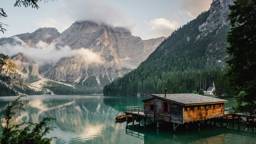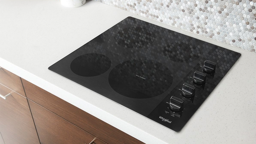Geothermal is lauded as being both renewable and inexpensive to operate, as its fuel source is simply heat from the ground. Nearly half of the solar energy that reaches our planet ends up stored in the earth and a geothermal system transfers that stored energy indoors by circulating fluids, heated underground, through buried pipes.
Super Effieciency
Over recent years, government-backed energy programs have pushed the geothermal industry to greater efficiencies – with many pumps doubling their capacities from the 1999 models to their equivalent 2008 versions.
Today’s generation of geothermal heat pumps brings four heat units into the system for every one unit of electricity needed to power the system. That’s a 400-percent efficiency rate, making the 95-percent efficiency rates of the best fuel-burning furnaces wither in comparison.
So now, just like buying a new refrigerator, geothermal heat pumps can earn an Energy Star sticker by achieving a Coefficient of Performance (COP) for heating of 2.8 or greater and a cooling efficiency of at least 13 on its Energy Efficiency Ratio (EER) rating.
More Cabin-friendly
But there have been a few other advancements that could make geothermal a reality for the cabin crowd. Previously, installing geothermal was difficult or downright prohibitive on tight lake lots, for retrofits or in difficult soil conditions often found in mountainous areas.
Now the industry is employing limited-access drill rigs, which are small track-mounted drills that can squeeze through narrow openings as little as 5 feet and accommodate low clearances of only 12 feet. These maneuverable machines are used to bore shafts required for pipe installation.
Ground Loop Versus Pond Loop
Installation accounts for a great percentage of the cost of a geothermal system. The system’s loops are buried, at great expense, below the frost line where the temps are consistently 50 degrees. The heat pump sends a liquid through the loop, which transfers heat up from the earth and into the cabin.Pond loops, which use water as the heat exchanger, simply sink the polyethylene pipe into water of no less than 6 or 8 feet deep – saving consumers a bundle on excavation.
A Caution
But before you start eyeing your lake or pond view as a potential heat source, be aware that a geothermal system affects water temperatures. A lake or pond will become colder in the winter as heat is extracted from it and warmer in the summer as a home’s heat is released back into it (depending on the specific system). There is some controversy about whether this has any impact on fish habitat, as warmer lake temps could be cause for algae blooms.
Timing
Whether you consider ground or pond loops, this may be just the time to invest. While so many government energy rebates exclude second residences, there is an unlimited 30-percent tax credit on qualifying solar, wind and geothermal systems through December of 2016. (Be sure to check any additional incentives from local and state municipalities as well.)
Dressing It Up
When thinking of how to design a system into your cabin, note that some manufacturers have added the aesthetic perk of gussying up the heat pump itself. Akin to the cabinetry-disguised refrigerators that have made their way into high-end kitchens, these pumps no longer need to be hidden in the basement. This can make the most of a cabin’s limited footprint by forgoing the floor space for a utility room and allowing for a completely open floor plan.
From a Cabin Owner's Perspective
Cabin owner Amy Schmidt recently rebuilt her family’s vacation home with her two sisters. While being environmentally conscious is important to all three of them, she admitted, “The cost difference was way more than we thought it would be.” But in the end they decided they were building this cabin, “for our children’s children and took advantage of some great tax incentives.”
At first, the family could feel the vibrations from the pump, but became accustomed to it “as you get used to any heating system turning on and off,” she says.
“We’re very happy with our decision,” says Amy. “The monthly costs are low, and we’re plenty warm in the winter.”
And really, what more could anyone want?
Lucie Amundsen wishes to be warmer in the winter in her home on the shores of Lake Superior.
READER RESOURCES:
Database of State Incentives for Renewables & Efficiency, www.dsireusa.org.
The International Ground Source Heat Pump, www.igshpa.okstate.edu/
Consumer Energy Association, www.consumerenergycenter.org/homeheating_cooling/geothermal.html












